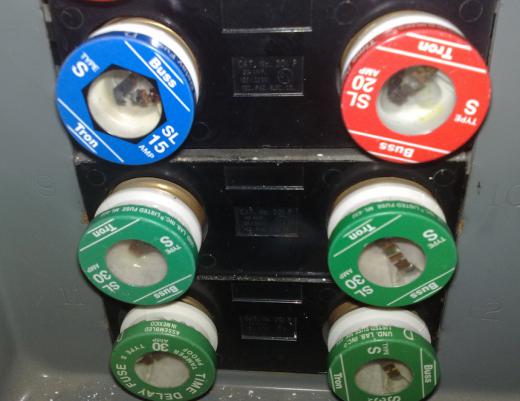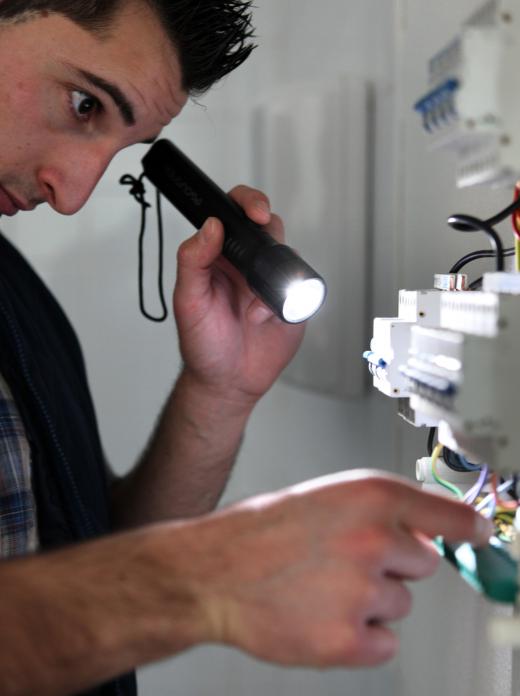A circuit detector is a device that completes electrical circuits in order to locate and diagnose electrical paths. The basis for this technology is used for many electrical systems and related tools, including the location of open or short circuits with signal tracers or voltage detectors, circuit detection at unlabeled circuit breaker switches, and diode or metal detection. These capabilities are also used by multifunctional devices such as multimeters. These typically handheld devices operate by tracing circuit routes and wiring to locate or signal connected components, breaks, or overloaded electrical paths.
A circuit detector can be understood by considering the example of a car with an electrical problem like a blown fuse. The car's wiring is a network of electrical pathways traveling from the battery to all the components, and to its ultimate ground: the metal framework of the body, connected to the negative ground terminal of the battery. Along this path, wires sometimes break, creating an “open," nonfunctional circuit. Wires sometimes cross or crimp, or accidentally touch the metal frame ground before current can reach the intended component, taking a shortcut called a short circuit. Wires with too much current will overheat a fuse, which breaks in order to open the circuit and prevent problems caused by melting wires or overloaded components.

The circuit detector localizes the problem wire or electrical path. A signal tracer connects to the frame with an alligator clip and provides a small electrical source from a battery, and a voltage detector might hook to the car's battery to borrow its power. The device touches or probes wiring along the faulty path and reacts when it completes its own circuit, with needle oscillations and audible or lighted signals. Some voltage detectors use transmitters connected to the battery with receivers directed at the wiring path in order to tell immediately whether a wire is connected to the battery. In other applications, non-contact voltage detectors can test line outlets, locate breaks in power cords, and assist in troubleshooting control panels.

Another type of circuit detector locates household circuits. For example, in a circuit breaker box full of unlabeled switches, the corresponding circuit breaker switch for a given fixture could be located by attaching a circuit breaker detector transmitter to an outlet to be tested. When the receiver unit is run over the circuit breaker switches or fuses, the device will signal when it detects the completed circuit. Similarly, diode detectors trace radio frequency and audio circuits, or modulated waves.

Another common type of circuit detector is the metal detector. This is essentially a radio frequency — an electromagnetic wave — placed in proximity to an oscillator, an electronic circuit that produces a repetitive electronic signal wave. These two waveforms overlap, with similar frequency and wavelength, canceling each other and producing no sound. When metal is introduced, induction — the voltage, conduction, and electromagnetic relationship — of the detector's coil changes, which conflicts the frequency waves. This generates audible “ripples," the familiar pulsing electronic feedback sound produced by airport security wands and overamplified rock guitars.
Multimeters are analog or digital multifunctional devices that measure voltage, current, resistance, diode, and continuity. Analog readouts permit observation of subtle signal changes. They can be adjusted for peaks and dips, and deliver immediate responsiveness. Multimeters are designed for bench use or as handheld units.
